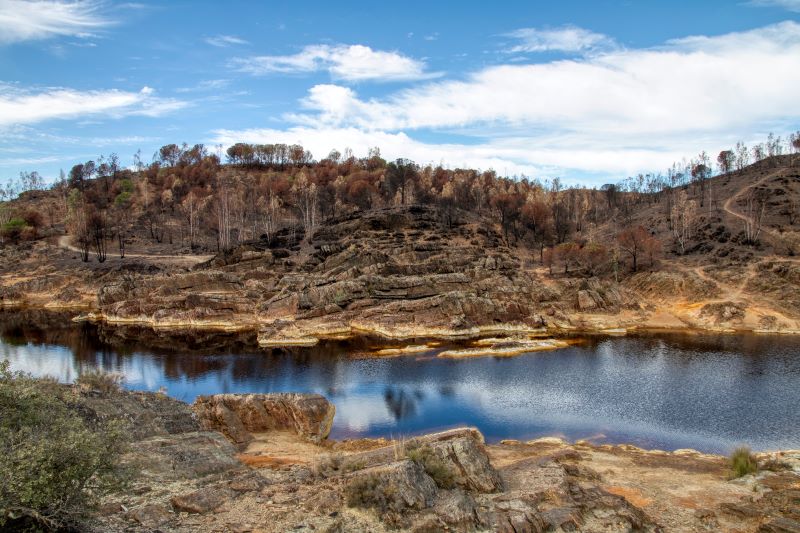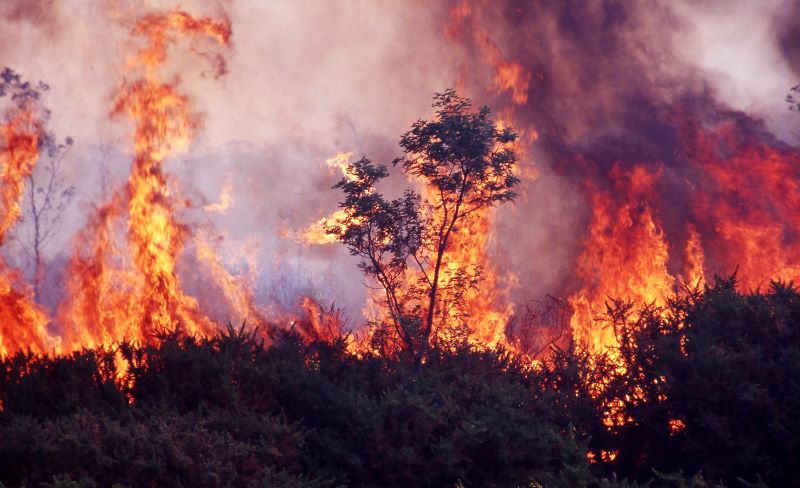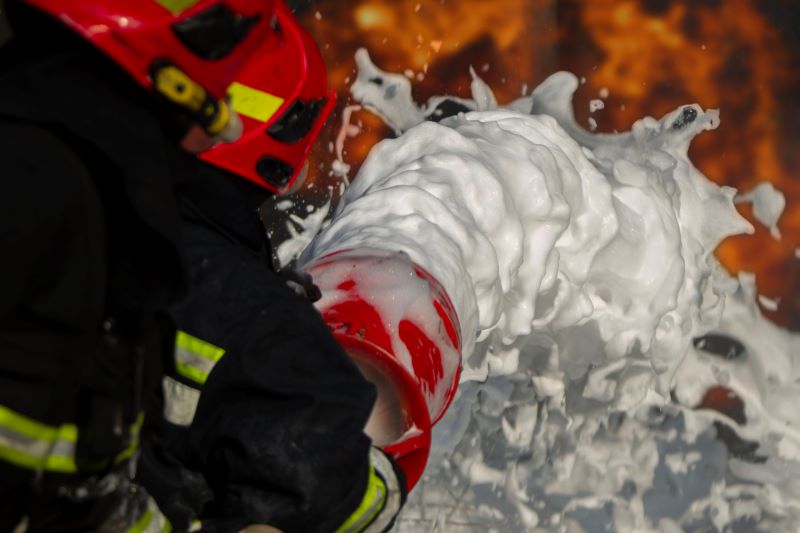How Wildfires Contribute to Water Contamination
Posted by Joel Pelina on Aug 12th 2022
During the summer, high temperatures and drought conditions often lead to dangerous wildfires, particularly in the arid American West. Although the fires themselves pose a serious hazard to the people living in those areas, their effects can last far beyond the initial fire damage, particularly to regional water supplies. Here is a list of facts about wildfires and water contamination, and details on the ways that wildfires contribute to water contamination.
Water Supplies Near Forests Are Prone to Wildfire Water Contamination
Around 80% of America’s freshwater resources come from forested lands. In the American West – an area especially prone to wildfires - 65% of freshwater supplies are located within or near forests. Because of that, these regions are especially susceptible to wildfire water contamination.

How Do Wildfires Contaminate Water Supplies?
- When forests burn from wildfires, ash and contaminants settle in the surrounding land, as well as in streams, lakes, rivers, and other water reservoirs.
- Much of this debris consists of dissolved organic matter (DOM), although other inorganic and man-made compounds can also be produced because of wildfires.
- Vegetation that normally helps hold the soil can burn away in a wildfire, eroding the soil and hardening the earth. During rainfalls, this damaged, eroded soil washes away, carrying debris, heavy metals, sediment, and DOM into water sources, increasing the concentration of contaminants in the water.
How Do These Contaminants Affect the Water?
- DOM – which can remain in the landscape for decades – affects the color and taste of water supplies, and often acts as a source for microbial growth, such as bacteria, viruses, and cysts.
- Inorganic compounds produced by wildfires can increase the ammonia levels in water supplies; this can cause acute ammonia toxicity in aquatic organisms.
- The increased concentration of both natural and man-made organic substances in water can lead to the formation of algal blooms, one example of which is the toxic cyanobacteria.
- Disinfectants used to treat the presence of DOM-contaminated water can react with the organic matter to form carcinogenic disinfection byproducts (DBP) such as trihalomethanes (THM) and haloacetic acids (HAA).

What Are Some of the Indirect Ways Wildfires Affect Water Quality?
- Wildfires can damage the electrical grid by burning power relays, power lines, and power transformers. Damage to the electrical grid can interrupt the function of water treatment plants and water quality monitoring equipment, which can result in inaccurately-treated water or a stoppage in the treatment of water provided to homes and businesses.
- Service lines can be damaged by wildfires. These are not the larger metal main lines running from the treatment plant, but the smaller water pipes closer to the ground surface. Service lines are often made of plastic, either polyvinyl chloride (PVC) or high-density polyethylene (HDPE). At high temperatures, both PVC and HDPE can degrade and release volatile organic compounds (VOC). This means that the water in these service lines can be contaminated by the fire-damaged plastic pipes carrying the water.
- VOCs that have been found to contaminate water due to wildfires include benzene, naphthalene, toluene, and styrene. Exposure to these VOCs can cause skin irritations, nausea, damage to the nervous, immune, and reproductive systems, impaired development in children, and even the development of cancer.
- Some firefighting chemicals used to combat wildfires can contaminate the ground and water supplies with forever chemicals, aka, per- and polyfluoroalkyl substances (PFAS). Although not all firefighting foams contain PFAS, certain foams used to contain wildfires near gas stations, industrial facilities, and other human communities can contain PFAS. These forever chemicals can pollute ground and surface waters in the areas in which they are used.

What Are Some Signs of Water Contamination Due to Wildfires?
Signs of wildfire-related water contamination include loss of water pressure, discolored water, and broken or leaking pipes, valves, and fire hydrants.
Are Consumer Drinking Water Systems an Effective Protection Against Wildfire Water Contamination?
Although home drinking water treatment systems are often an excellent way to protect your water for daily use, many systems are not designed for use with non-municipally-treated water (in cases where municipally-treated water is unavailable, an emergency treatment system may be a possible solution for healthier water). Wildfires can sometimes cause water contamination at levels far beyond the scope of home water filters.
For example, over the past several years, wildfires in Oregon and California have caused source waters to be contaminated by the VOC, benzene. The Paradise Irrigation District in California was contaminated by over 2,000 times the maximum mandated safe level of benzene from a wildfire in 2018, and in Santa Rosa, California, a wildfire in 2017 contaminated the water by over 40,000 times the maximum safe level of benzene. At these extreme levels of water contamination, consumer-grade drinking water systems are not a guarantee to safely treat the water. While experts agree that carbon block filters are effective at treating many drinking water contaminants, authorities advise people not to be overconfident in their protection when the contaminant levels are tens of thousands of times higher than maximum safe levels; simply put, the most extreme contamination levels may be too much for a home water filter to handle – even for Multipure drinking water systems, which are tested and certified for very high levels of water contamination.
When the water in your home could be unsafe to use, preparation is the key. A Multipure drinking water system can be a great way to bottle and store an emergency supply of clean water, especially as Multipure’s Aqualuxe, Aquaperform, Aquaversa, and Aquamini are NSF-certified to treat the broadest range of drinking water contaminants. During many water emergencies, a Multipure WET System can offer a way to render many water sources safer for consumption when tap water has been compromised. In any case, the best thing to do in case of emergency is to pay attention to what local authorities advise, and be prepared, be knowledgeable, and be aware of your local water conditions.
Resources
- American Chemical Society. “The link between wildfires and drinking water contamination.” Phys.org. June 9, 2022. https://phys.org/news/2022-06-link-wildfires-contamination.html
- Chow, A. T.-S., T. Karanfil, and R.A. Dahlgren. “Wildfires Are Threatening Municipal Water Supplies.” Eos. August 12, 2021. https://eos.org/science-updates/wildfires-are-threatening-municipal-water-supplies
- Daley, Beth. “Wildfires are contaminating drinking water systems, and it’s more widespread than people realize.” The Conversation. May 6, 2021. https://theconversation.com/wildfires-are-contaminating-drinking-water-systems-and-its-more-widespread-than-people-realize-159527
- Helmer, Jodi. “Wildfires Can Spark Widespread Contamination of Public Water Supplies.” NRDC. October 22, 2020. https://www.nrdc.org/stories/wildfires-can-spark-widespread-contamination-public-water-supplies
- Water Resources. “Water Quality after Wildfire.” USGS. March 1, 2019. https://www.usgs.gov/mission-areas/water-resources/science/water-quality-after-wildfire
- “Wildfires: How Do They Affect Our Water Supplies?” EPA. Last updated February 7, 2022. https://www.epa.gov/sciencematters/wildfires-how-do-they-affect-our-water-supplies

